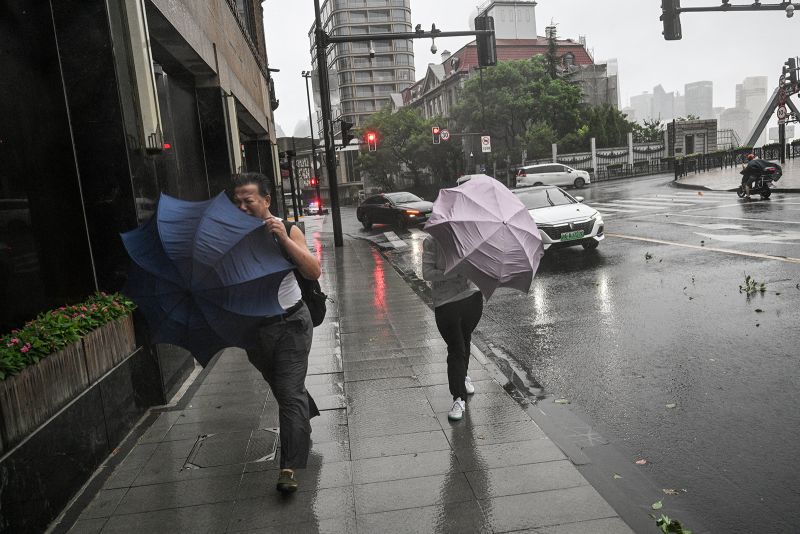
Shanghai Shaken by Typhoon Bebinca, a Record-Breaking Storm After 70 Years
The recent devastation caused by Typhoon Bebinca in Shanghai has brought to light the urgent need for enhanced disaster preparedness and response measures in the region. With wind speeds reaching up to 230 kilometers per hour, Typhoon Bebinca has been categorized as the strongest storm to hit Shanghai in seven decades. The impact of this powerful typhoon has been felt across the city, causing widespread damage to infrastructure, homes, and disrupting normal life for residents.
One of the most significant impacts of Typhoon Bebinca has been on the city’s transportation network. Flights have been canceled, trains suspended, and roads inundated with floodwater, making it difficult for residents to move around the city. This has not only disrupted daily commutes but has also hampered emergency response efforts, making it challenging for authorities to reach those in need of assistance.
In addition to the physical damage caused by the typhoon, there have also been reports of casualties and injuries. The strong winds and heavy rains have resulted in landslides, collapsed buildings, and other accidents, leading to loss of life and injuries among residents. The destruction caused by Typhoon Bebinca serves as a stark reminder of the devastating power of natural disasters and the importance of preparedness in mitigating their impact.
The response to Typhoon Bebinca has highlighted the need for improved disaster management strategies in Shanghai. While authorities have been working tirelessly to provide assistance to affected residents and restore normalcy in the city, the scale of the damage caused by the typhoon has exposed gaps in the existing response mechanisms. It is crucial for the government to invest in better forecasting technologies, early warning systems, and evacuation plans to minimize the impact of future disasters.
Moreover, community engagement and awareness play a vital role in enhancing resilience to natural disasters. Educating residents about the risks associated with typhoons and the actions they can take to protect themselves and their families can save lives in times of crisis. By fostering a culture of preparedness and encouraging proactive measures such as securing homes, stocking emergency supplies, and knowing evacuation routes, communities can better cope with the impact of disasters like Typhoon Bebinca.
In conclusion, the aftermath of Typhoon Bebinca serves as a wake-up call for Shanghai and other vulnerable regions to prioritize disaster preparedness and response efforts. By learning from the lessons of this devastating storm and implementing robust measures to enhance resilience, cities can better protect their residents and minimize the impact of future natural disasters. Only through collective action, collaboration, and investments in disaster risk reduction can we build a safer and more resilient future for all.
